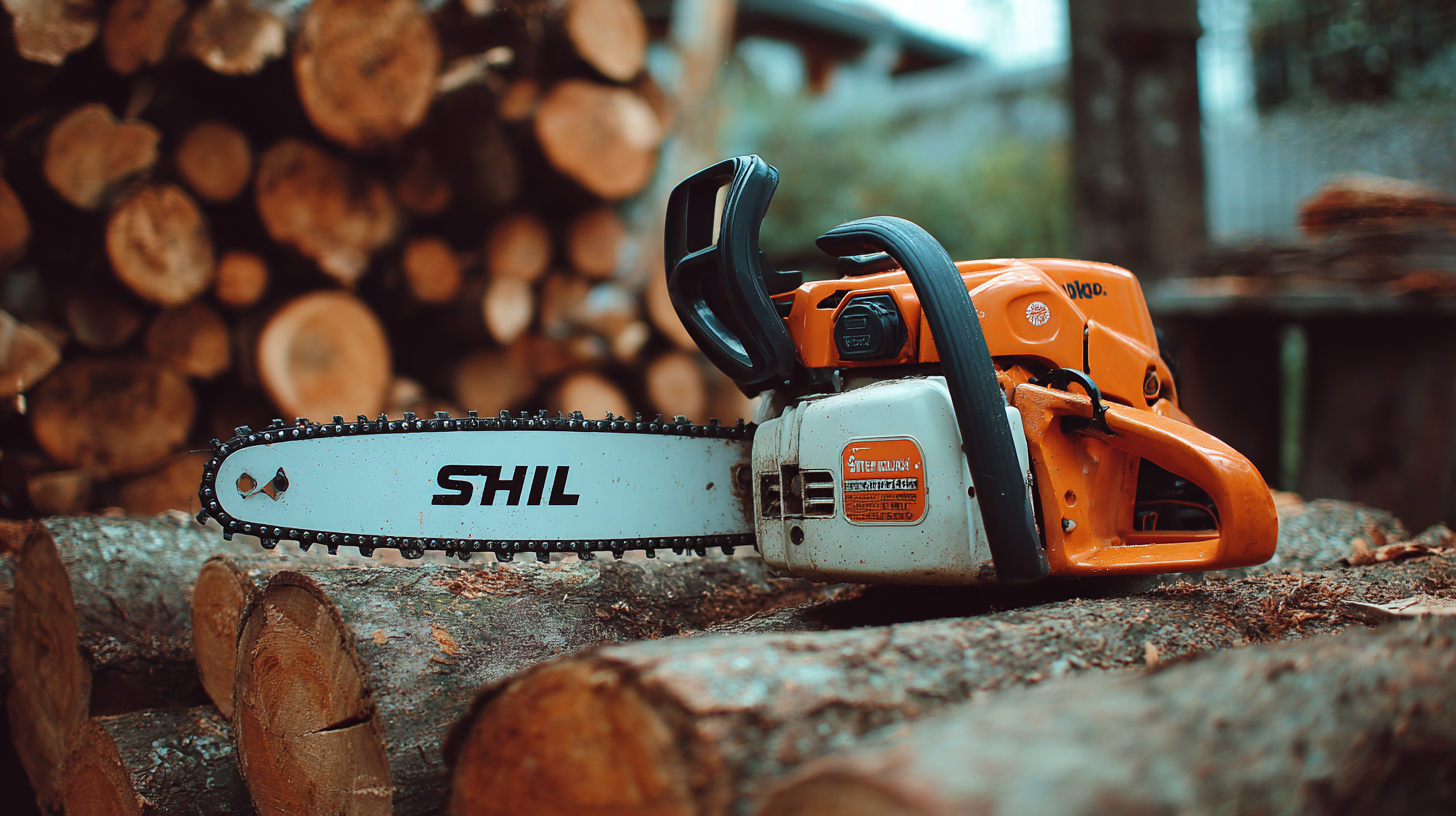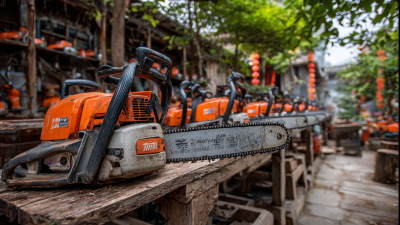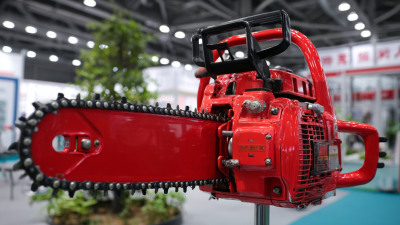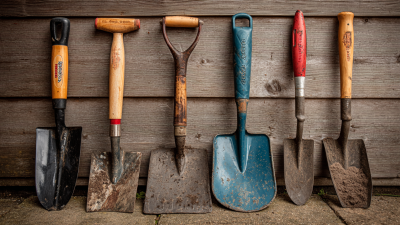Unlocking the Power of Stihl Chainsaws: Essential Tips for Efficient Woodworking
The Stihl chainsaw, a leading tool in the woodworking industry, has revolutionized the way both professionals and hobbyists approach their projects. According to a report by the Consumer Product Safety Commission, chainsaws are responsible for an estimated 36,000 injuries annually, underscoring the importance of safety and efficiency in using these powerful machines. Moreover, data from the North American Chainsaw Manufacturers Association reveals that chainsaw sales have increased by over 20% in the past five years, highlighting the growing reliance on tools like the Stihl chainsaw for various applications, from logging to home improvement. Unlocking the full potential of Stihl chainsaws not only enhances productivity but also ensures precision in woodworking tasks. By adhering to essential tips and best practices, users can maximize the effectiveness of their tools while minimizing risks, ultimately leading to a more satisfying woodworking experience.

Choosing the Right Stihl Chainsaw for Your Woodworking Needs
Choosing the right Stihl chainsaw for your woodworking needs is crucial for success and safety in your projects. With numerous models available, understanding your specific requirements is key. For hobbyists and professional woodworkers alike, the weight and power of the chainsaw should align with the tasks at hand. Lighter models are ideal for precision work, while heavier, more powerful chainsaws are better suited for larger cuts and more demanding jobs.
When selecting a Stihl chainsaw, consider the type of wood you'll be working with. Softwoods, like pine, require different handling compared to hardwoods, such as oak. Moreover, a chainsaw equipped with a guide bar that’s appropriate for your project will enhance efficiency. For detailed work, a shorter guide bar allows for better maneuverability, while a longer bar is advantageous for felling larger trees or cutting thick logs.
Tips for efficient woodworking with your Stihl chainsaw include maintaining sharp chains for cleaner cuts and ensuring proper tensioning before each use. Familiarize yourself with safety features and protective gear to prevent accidents. Additionally, practice proper cutting techniques, such as using the right body posture and cutting angles, to enhance both performance and safety.
Unlocking the Power of Chainsaws: Essential Tips for Efficient Woodworking
| Chainsaw Model | Bar Length (inches) | Engine Power (cc) | Weight (lbs) | Best Use Case |
|---|---|---|---|---|
| Model A | 16 | 30 | 10.5 | Small to Medium Trees |
| Model B | 18 | 40 | 11.5 | Medium to Large Trees |
| Model C | 20 | 50 | 13.0 | Felling & Bucking |
| Model D | 24 | 60 | 14.5 | Heavy Duty Logging |
Top 5 Essential Safety Tips When Using Stihl Chainsaws
When using Stihl chainsaws, safety should always be your top priority. Here are some essential tips to keep in mind while working with these powerful tools.
First, always wear appropriate personal protective equipment (PPE). This includes a hard hat with a face shield, hearing protection, gloves, and cut-resistant chaps. The right gear can protect you from falling debris and reduce the risk of severe injuries during operation.
Second, familiarize yourself with the chainsaw's controls and features before starting. Understanding how to quickly shut off the saw and how to manage its power will help you respond effectively in potentially dangerous situations. Always start the saw on stable ground, away from any obstacles, ensuring both your safety and that of those around you.
Lastly, maintain a clear work area. Remove any tripping hazards and ensure you have adequate space to maneuver while cutting. Keeping a safe distance from others while you work reduces the risk of accidents, allowing you to focus on achieving efficient results in your woodworking projects.
Woodworking Efficiency with Chainsaws: Safety Practices
6 Techniques for Maintaining Your Stihl Chainsaw's Efficiency
To maintain the efficiency of your Stihl chainsaw, regular upkeep is essential. One of the primary techniques involves sharpening the chain regularly. A sharp chain not only cuts more efficiently but also reduces the strain on the motor, leading to a longer lifespan for your saw. Make sure to use a file specifically designed for chain sharpening and follow the manufacturer's guidelines for the correct angles and techniques.

Another crucial aspect of maintenance is ensuring proper lubrication. Using high-quality bar and chain oil is vital to keep the moving parts functioning smoothly. Regularly check the oil level and apply it generously, especially during prolonged use. Additionally, cleaning the air filter and ensuring it is free from debris can significantly enhance performance and prevent potential overheating. By implementing these techniques, you can ensure that your Stihl chainsaw operates at peak efficiency, making your woodworking tasks smoother and more enjoyable.
Best Practices for Cutting Different Types of Wood with Stihl Chainsaws
When using Stihl chainsaws for woodworking, understanding the characteristics of different wood types is critical for achieving clean cuts and preventing damage to both the material and the tool. Softwoods like pine and fir are generally easier to cut, allowing for smooth and fast operation.
 When working with these types, it's essential to use a sharper chain and to maintain a steady, controlled feed rate to ensure the saw bites into the wood without straining the motor.
When working with these types, it's essential to use a sharper chain and to maintain a steady, controlled feed rate to ensure the saw bites into the wood without straining the motor.
On the other hand, hardwoods such as oak and maple require careful techniques due to their density and toughness. It is advisable to reduce the cutting speed and apply consistent pressure, ensuring that the chainsaw’s teeth have adequate time to engage the wood fibers. Additionally, utilizing the proper bar length can make a significant difference, as a longer bar may be beneficial for thicker hardwoods.
Always remember to clean the chain and bar regularly to prevent buildup and overheating, which can compromise efficiency and safety during your woodworking projects.
Maximizing Precision: 4 Tips for Effective Chainsaw Woodworking Projects
When it comes to effective chainsaw woodworking, precision is paramount. According to a recent report by the Woodworking Machinery Industry Association (WMIA), improperly executed cuts can lead to material wastage of up to 15%, not to mention the safety risks involved. Therefore, here are four essential tips to enhance your woodworking projects with Stihl chainsaws, ensuring both accuracy and efficiency.
First, always ensure your chainsaw is properly maintained. A sharp chain not only reduces the amount of force needed but also guarantees cleaner cuts, as noted by the Forest Products Laboratory. Research indicates that a sharp chain can improve cutting efficiency by approximately 20%. Second, familiarize yourself with your chainsaw's adjustments, such as chain tension and depth gauge settings. These adjustments have a direct impact on the quality of your cuts, often determining the difference between a clean finish and a rough edge. Finally, adopting a stable stance and employing proper cutting techniques will enhance your control during operation, ultimately leading to higher-quality woodworking projects. Engaging with these tips will not only optimize your workflow but will also ensure that you achieve precision results in all your chainsaw endeavors.
Related Posts
-

How to Master Your Ms880 Chainsaw for Ultimate Performance
-

Unlocking the Power of China Chainsaws: A Comprehensive Guide to Top Models and Their Uses
-

Exploring Gasoline Chain Saw Market Trends at the 2025 China 138th Import and Export Fair
-

7 Reasons Why Quality Lawn Mower Parts Can Save You Money and Time
-

How to Choose the Right Garden Tools for Your Outdoor Projects
-

How to Maintain Your Chain Saw for Optimal Performance




